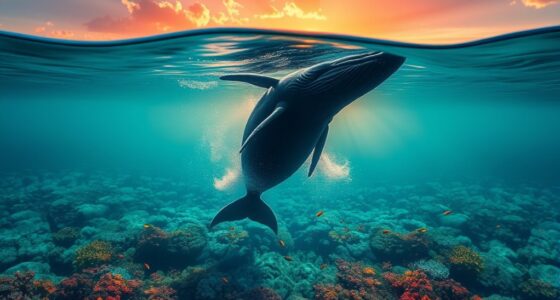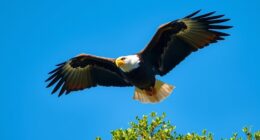Have you ever considered how quickly a species can disappear, despite its vibrant presence? The story of the golden toad, once a symbol of Costa Rica’s rich biodiversity, highlights the fragile balance of ecosystems and the growing threats they face. Its sudden vanishing raises important questions about our impact on the environment—and whether we can prevent similar losses. Exploring this story reveals vital lessons that could shape our future efforts to protect the natural world.
The Bright Beginnings of the Golden Toad
The golden toad was once a symbol of hope and beauty in Costa Rica’s cloud forests. You might’ve seen its vibrant, shimmering orange-gold skin, which made it stand out against the lush greenery. This tiny amphibian, measuring just a few centimeters, became a symbol of the country’s rich biodiversity. During the 1980s, scientists discovered it thriving in the Monteverde Cloud Forest Reserve, sparking excitement among conservationists. Its striking appearance and elusive nature captured the attention of researchers and nature lovers alike. The golden toad’s brief existence seemed to promise a thriving, resilient species. It embodied the delicate balance of life in these high-altitude forests, inspiring efforts to preserve this fragile habitat. For a time, it was a beacon of hope for conservation in Costa Rica. Unfortunately, habitat loss and climate change contributed to its rapid decline, highlighting the importance of biodiversity conservation to prevent similar extinctions.
The Sudden Disappearance From Costa Rica’S Cloud Forests
Despite its vibrant appearance and once-thriving populations, the golden toad vanished from Costa Rica’s cloud forests with startling speed. One year, you might see dozens hopping across the mossy ground; the next, they’re gone. Their disappearance wasn’t gradual but abrupt, leaving scientists baffled.
During the late 1980s and early 1990s, populations plummeted suddenly, with no clear signs of decline beforehand. You’d expect a slow decline, but instead, entire colonies disappeared almost overnight. The toads seemed to vanish without warning, confounding conservation efforts.
This rapid disappearance shocked researchers, highlighting how quickly species can vanish when faced with environmental changes. The sudden loss underscored the fragility of these ecosystems and the importance of understanding what causes such swift extinctions. Recognizing the role of Environmental Monitoring could help prevent similar sudden extinctions in the future.
Factors Contributing to the Toa’s Decline
Multiple factors contributed to the golden toad’s rapid decline, with climate change playing a central role. Rising temperatures and changing rainfall patterns disrupted its breeding cycle and habitat stability. Droughts reduced the availability of moist, suitable breeding sites, forcing the toads into smaller, less viable areas. Additionally, habitat destruction from agriculture and deforestation further fragmented their environment, making it harder for populations to survive and reproduce. Introduced predators and disease also compounded the decline, spreading quickly in the limited habitats that remained. Human activities, such as pollution and land development, accelerated these threats. Sustainable habitat management and conservation efforts have become crucial in understanding and preventing similar extinctions. Together, these interconnected factors created a perfect storm that overwhelmed the golden toad’s ability to adapt, pushing it toward extinction in a relatively short period.
The Role of Climate Change in Amphibian Extinctions
Climate change has emerged as a dominant force behind the decline of amphibian populations worldwide. Rising temperatures and altered precipitation patterns disrupt their delicate breeding cycles and habitat conditions. You might notice that many amphibians rely on specific moisture levels and temperature ranges to survive and reproduce. When climate change causes droughts or unseasonal storms, it directly affects these conditions, making environments inhospitable. Additionally, warmer temperatures can increase the prevalence of diseases like chytridiomycosis, which devastates amphibian populations. You may not see the immediate impact, but gradual changes weaken their resilience and push vulnerable species closer to extinction. Climate change not only threatens individual habitats but also destabilizes the complex ecological networks amphibians depend on for their survival. Environmental impacts further compound these stresses, leading to a rapid decline in biodiversity.
Habitat Destruction and Human Impact
Habitat destruction caused by human activities remains one of the most significant threats to amphibian survival. When you clear forests, drain wetlands, or expand urban areas, you eliminate vital breeding sites and shelter for species like the golden toad. Steampunk and Victoriana designs often incorporate intricate mechanical elements that remind us of the importance of preserving natural environments. These environments provide essential moisture, temperature regulation, and food sources. As human development encroaches, amphibians lose their habitats faster than they can adapt. Pollution from agriculture and industry further degrades these environments, making them uninhabitable. You mightn’t see the immediate effects, but each construction project or pollution spill chips away at their populations. Protecting remaining habitats is crucial, as it helps preserve biodiversity and prevents similar extinctions from happening again. Your actions directly influence the survival of these fragile species.
Lessons Learned From the Golden Toad’S Extinction
What can we learn from the golden toad’s extinction? First, it shows how quickly a species can vanish when its habitat is compromised. Small populations are especially vulnerable to sudden changes, like disease or climate shifts.
We also see that relying on limited data or delayed action can be deadly; by the time we realize a species is at risk, it might be too late. This extinction highlights the importance of proactive conservation efforts and early intervention.
Additionally, it reminds us that ecosystems are interconnected—disrupting one element can have ripple effects elsewhere. Biodiversity loss can destabilize entire habitats, making recovery even harder.
Most importantly, it teaches us that human impacts aren’t just temporary; they can cause irreversible loss if we don’t act responsibly and with foresight.
Conservation Efforts and Ongoing Challenges
Efforts to conserve species like the golden toad have increased as awareness of their vulnerability grows, but many challenges remain. You might participate in habitat protection, breeding programs, or research to better understand threats.
However, habitat destruction from agriculture, urbanization, and climate change continues to threaten amphibians worldwide. Disease, especially chytridiomycosis, complicates conservation, making it harder to recover populations.
Funding is often limited, and political or local support varies, hindering large-scale efforts. You must also navigate the complexities of captive breeding and reintroduction, which don’t always succeed.
Despite these obstacles, conservationists remain committed, employing innovative strategies and international collaboration. The fight to save species like the golden toad underscores the urgent need for sustained, adaptive efforts to address ongoing ecological threats.
The Importance of Biodiversity Preservation
Why does preserving biodiversity matter so much? Because every species plays a vital role in maintaining healthy ecosystems that support life on Earth, including yours. When biodiversity declines, ecosystems become fragile, less resilient, and more vulnerable to collapse. A new sentence with ecosystem stability and the rest of the sentence.
This affects food security, clean water, air quality, and climate stability—all essential for your well-being. The extinction of a single species, like the golden toad, signals deeper ecological issues and leads to unpredictable consequences.
Preserving biodiversity safeguards genetic diversity, ensuring plants and animals can adapt to changing environments. It also preserves natural resources and cultural heritage.
Protecting biodiversity isn’t just about saving iconic animals; it’s about maintaining the complex web of life that sustains us all. Your actions influence the health of our planet now and for future generations.
How We Can Prevent Future Losses
Preventing future species losses requires proactive strategies that address the root causes of extinction. You can support conservation efforts by advocating for stronger environmental policies that protect habitats and reduce pollution. Protecting critical ecosystems, such as rainforests and wetlands, ensures species have safe places to thrive. You should also promote research and funding for species recovery programs, including captive breeding and habitat restoration. Raising awareness about the importance of biodiversity encourages community involvement and responsible land use. Additionally, supporting sustainable practices in agriculture, logging, and development helps minimize habitat destruction. Incorporating dynamic communication exercises for couples can foster greater understanding and collaboration within conservation communities, enhancing collective efforts to safeguard biodiversity.
Conclusion
The extinction of the golden toad reminds you how delicate ecosystems are and how urgent it is to act. By protecting habitats, addressing climate change, and supporting conservation efforts, you can help prevent similar tragedies. Your awareness and actions matter in preserving biodiversity for future generations. Don’t wait until it’s too late—every effort counts in safeguarding our planet’s fragile life. Together, you can make a difference and keep nature’s wonders alive.






